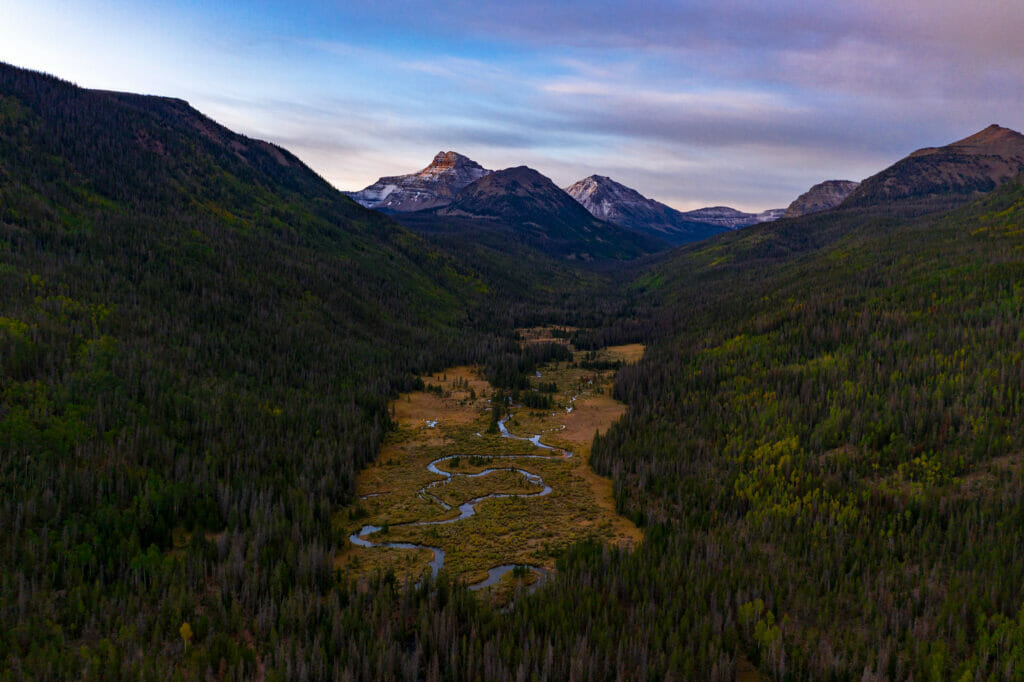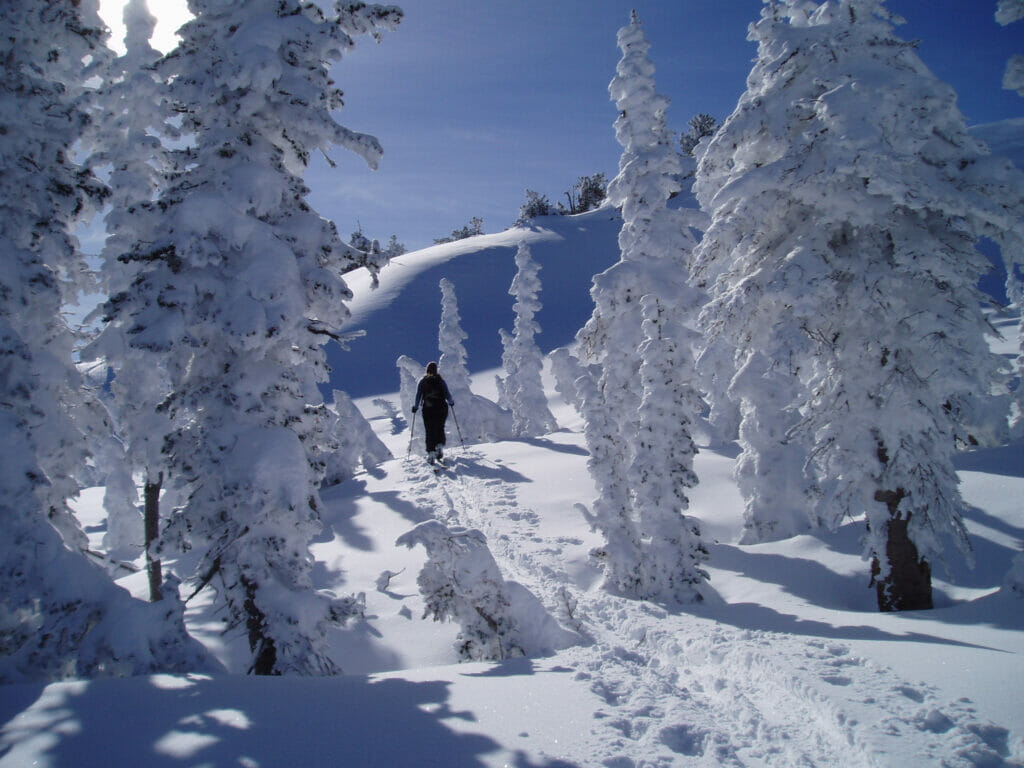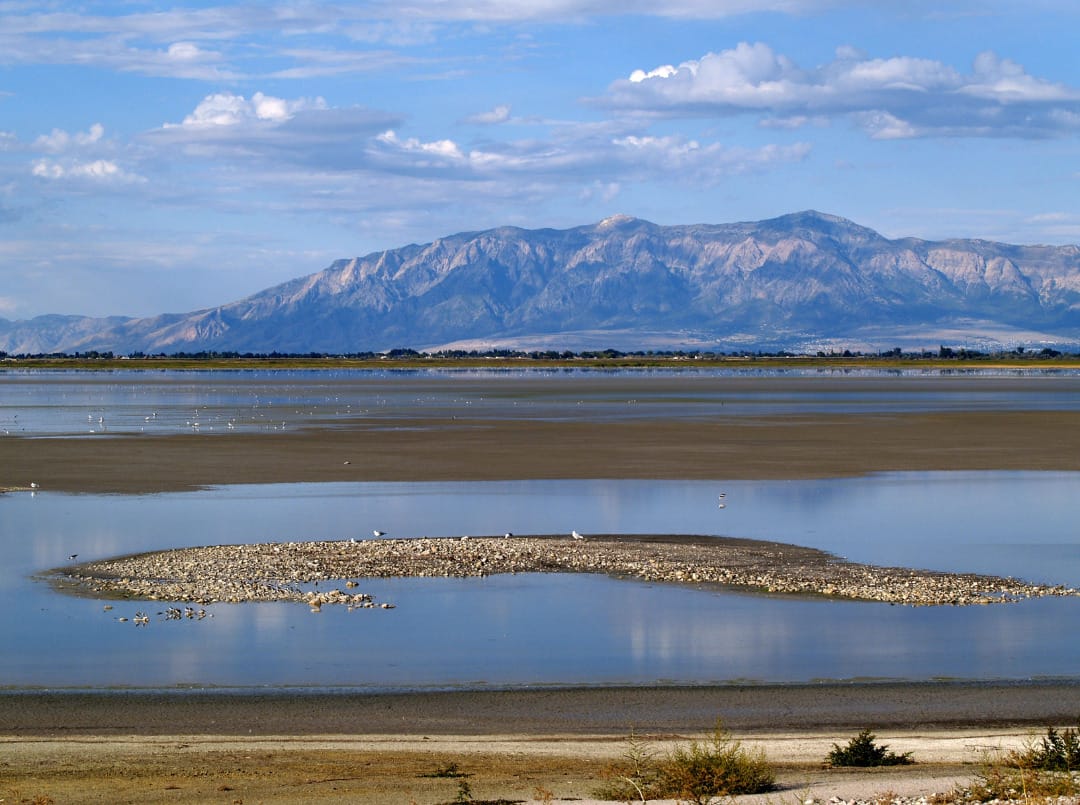Making sense of the doomsday scenarios, donations and what role TU is playing in this important watershed.
With recent headlines predicting a dire future for the Great Salt Lake due to the extended drought and climate change, many are wondering what got us here and if there is any hope to restore one of Utah’s most critical watersheds.
The combination of unsustainable water use and drought has led to a decades-long decline in the lake’s volume. Without serious actions to reduce local consumptive use and get more water in the lake, the drying lakebed has the potential to wreak havoc on ecosystems and expose millions of people to toxic dust no longer contained by the remaining water.

From dread to dreams come true
But there are signs of hope. First, a record snowpack this winter is cause for celebration, with water levels in the lake already rising thanks to significant runoff. Second, the Church of Jesus Christ of Latter-day Saints made a historic water rights donation to the Great Salt Lake Watershed Enhancement Trust that was formed in 2022 by the state legislature to work with water rights holders across the watershed to protect, lease and/or acquire portions of their water supply to keep it for in-stream needs and restore the watershed’s habitat.
The $40 million Trust – of which TU’s Utah and water habitat program director Jordan Nielson sits on the Advisory Council – will oversee the Church’s water rights donation of 20,000 acre-feet (about 15,000 football fields filled with a foot of standing water in each of them). Additionally, any transactions costing over $250,000 require approval by the Advisory Council, which gives TU another opportunity to shape the future of this critical watershed.
Put together, the combination of these events has led to a small, collective exhale about the state of the lake, but much more needs to be done.
“While the historic water rights donation and heavy snowpack this year are certainly great news and positive developments for the watershed, they are simply temporary relief and not a total restitution,” said TU’s Nielson. “The donation is the result of years of work by Utah’s legislature to better the state’s water rights system, allowing for the Church to even make such a gesture.”

TU fought for legislation allowing for in-stream flow leases in Utah’s legislature in 2008, and for years has leased traditionally consumptive water rights, such as irrigation, and instead kept the water in the stream to benefit native trout.
“That’s how you get an organization focused on coldwater conservation to mobilize around a body of water called the Great Salt Lake,” said Nielson. “With four full-time staff actively working in the watershed, being part of the Trust will allow us to use our long-standing community relationships to think more holistically about the connection between our projects upstream and those of our partners like Ducks Unlimited, the Audubon Society and the Nature Conservancy found downstream or in the lake’s wetlands.”
TU’s Utah work continues
TU has long been focused on Utah’s Weber and Bear Rivers, home to unique species such as the Bonneville and Bear River cutthroat trout, and two of the major tributaries that drain into the Great Salt Lake. With funding made available through recent federal infrastructure and climate legislation, TU staffers have already been hard at work envisioning projects that will improve existing habitat found at higher elevations with federal agency partners like the Bureau of Land Management, U.S. Forest Service, Natural Resources Conservation Service, and the U.S. Fish and Wildlife Service.
From 2023-2025, for example, TU and our partners will construct up to 2,000 man-made beaver dams on headwaters of the Upper Weber River. The efforts are planned at 17 locations and are expected to cover 9 miles of stream. And, on the Bear River at North Eden Creek, a bridge will replace a culvert to open more than 10 miles of the creek and allow for the spawning and rearing of cutthroat trout from Bear Lake. An irrigation system upgrade is also planned to restore stream flows to the lower 1.5 miles of the creek.
But while these types of projects are directly benefiting these watersheds upstream, the Trust has opened the door to fully understanding the fruits of TU’s labor further downstream.
“It’s a stretch to say our upstream projects will be enough to save the Great Salt Lake,” said Tanner Cox, TU’s Weber River project manager. “But where we can really make a difference is working with upstream water rights holders – who have been our partners for years – to communicate the benefits of in-stream flow leases for the greater watershed’s survival. We’re trusted where we work because partners have seen the benefits of our projects and policies with their own eyes.”
With recent reports of farmers and the state’s greater agricultural industry remaining skeptical of leasing their water rights due to concerns of their water potentially being diverted before even reaching the lake, TU’s relationships across the watershed a handful of existing water rights leases stand to be some of the Trust’s strongest assets going forward.
“It’s natural to want to know for sure that your water is going to its intended purpose,” said Jim DeRito, TU’s Bear River project manager. “With investments being made by the state to fully study and ensure these leased water rights make it to the lake, they will in turn give us a greater picture of our organization’s projects for trout and how we can make them even more effective to better the watershed as whole.”
All in all, there is still a lot of work to be done to restore one of the West’s most important watersheds. But with signs of life beginning to show beneath the dense snowpack and on the to-do lists of our team in Utah, there is also reason to have cautious optimism about the progress being made to restore the Great Salt Lake.



